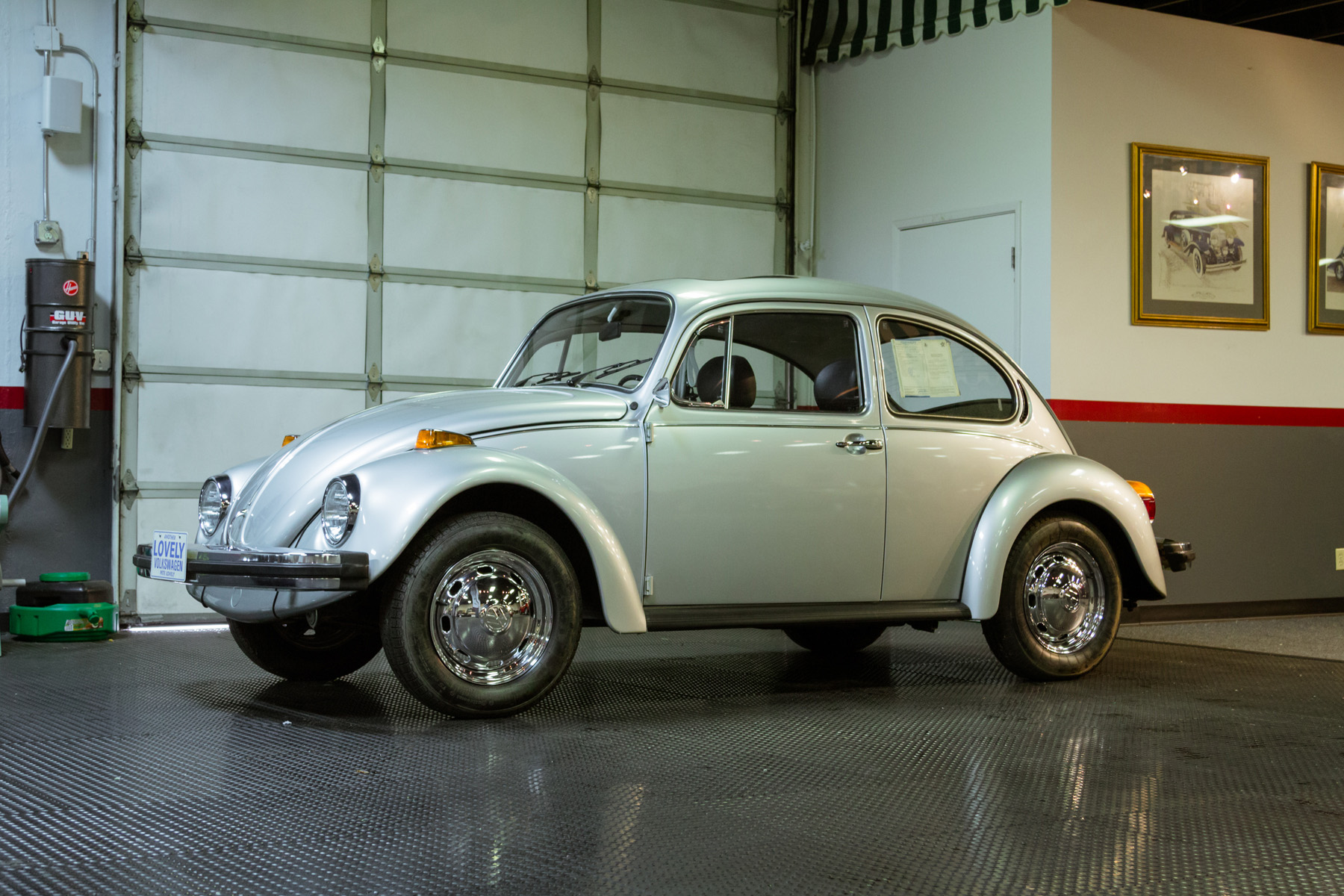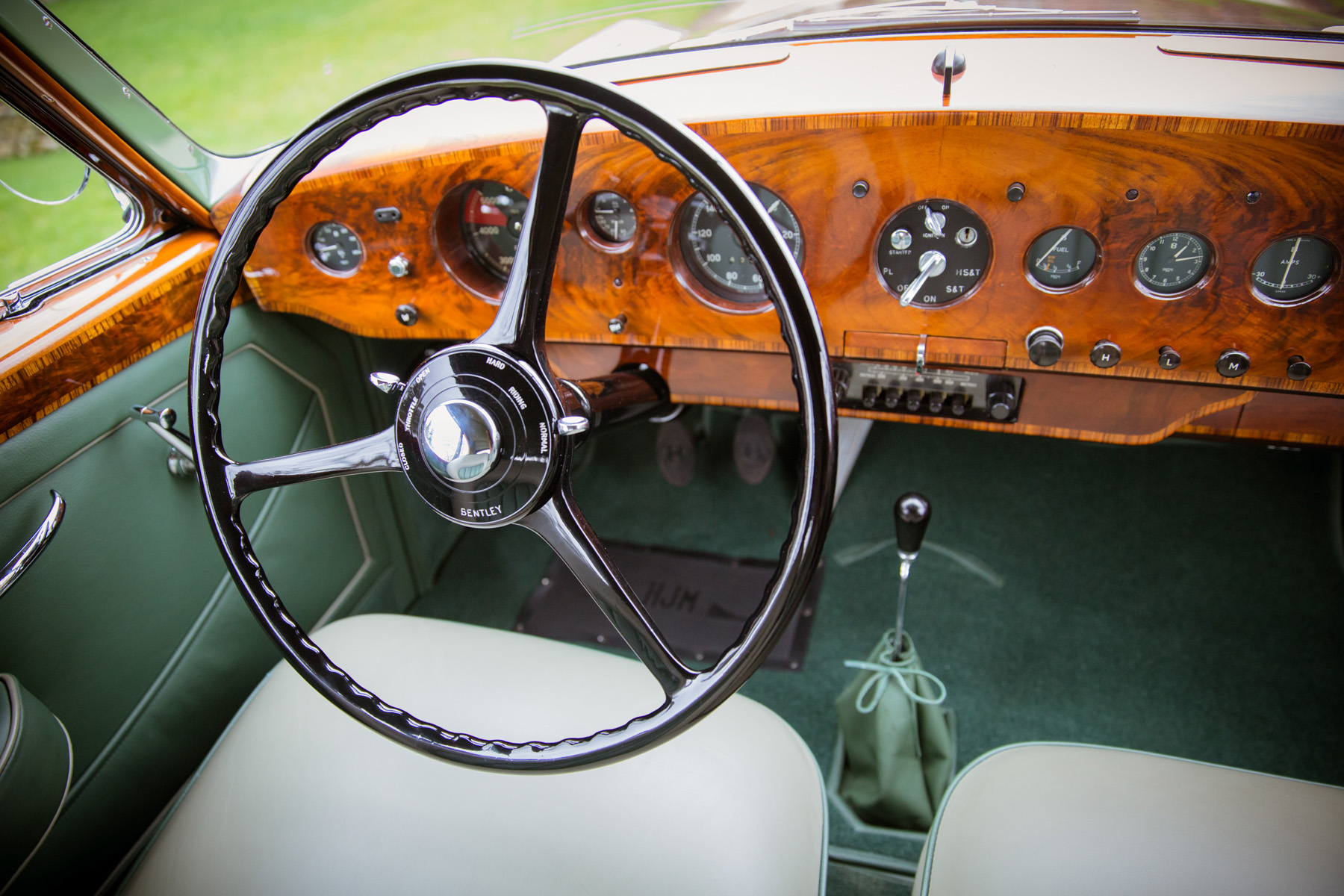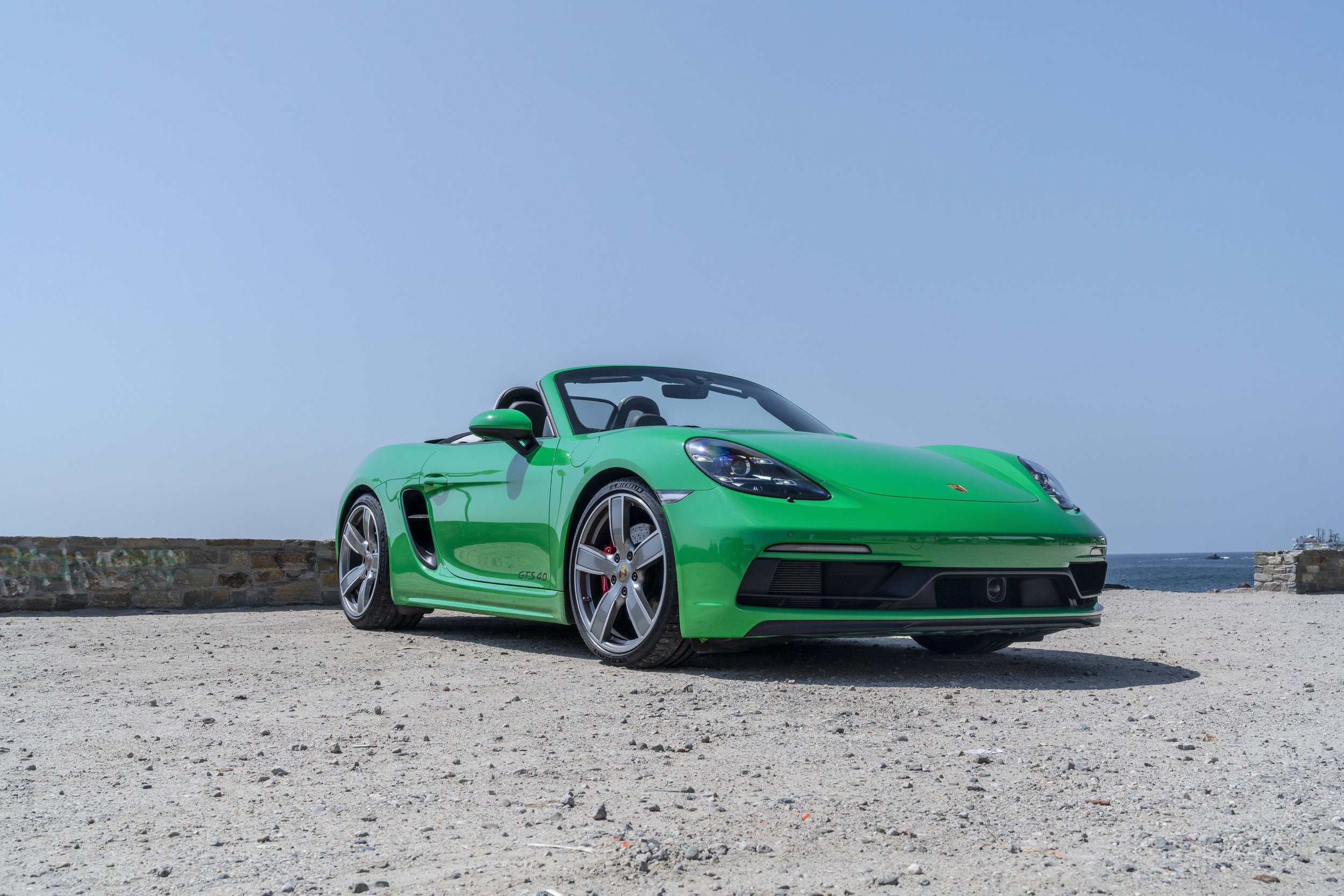
On the block: Iconic cars often mass produced and affordable in their day are increasing in value, like this 1977 Volkswagen Super Beetle estimated by Gooding & Company to sell for $35,000 - $55,000 (image courtesy Gooding & Company/Mike Maez).
The Super Bowl of classic car collecting kicks off August 12 as Monterey Car Week gets underway, and The Car Crush will be covering the big game like white on rice. Here we continue our pre-game reporting with this second half of The Car Crush interview with David Gooding of Gooding and Company, which is celebrating its tenth year as the official auction house for the Pebble Beach Concours d'Elegance. We sample his firm's offerings for the highly-anticipated weekend as he talks trends for both dabbling and veteran collectors, and reminisces on a big sale that surprised even himself.
On the block: 1973 Porsche 911 2.7 Carrera RS (Estimate $475,000 - $550,000). Image courtesy Gooding & Company/Mike Maez
The values of early Porsche 911’s seem to have exploded recently, but weren’t standard series 911’s produced in volumes too high to warrant the prices we’re now seeing? At the Gooding & Company auction in Amelia Island in March, a 1969 911 2.0 went for $143,000 and with a 1973 911 2.4 S selling for $198,000. Why are prices so high?
Because it’s harder to find really good ones. There’s a lot of crap out there, a lot of junk, especially with mass-produced cars. The cars that did so well at Amelia Island were great examples, and the numbers make sense to me. Drive a Porsche 911 2.7 - which is a between a hundred and fifty and two hundred thousand - and it’s a pretty exciting car with performance that’s hard to beat at that price.
On the block: 1962 Porsche 356 B Super 90 Cabriolet (Estimate $135,000 - $150,000). Image courtesy Gooding & Company/Brian Henniker.
Porsche 356 and 911 are resonating partly because they are predecessors to the modern 911 Carrera. The same can be said for the Ferrari Dino because it is the predecessor to the modern Ferrari 458. Do you think the BMW 2002, which was the predecessor to the modern BMW 3-Series, offers good value?
On the block: 1974 BMW 2002 Turbo (Estimate: $60,000 - $80,000). Image courtesy Gooding & Company/Mathieu Heurtault
Yes, they are tremendous value, and there’s too big a population of people that relate to them and like them and want one. People get intimidated because they see a spike go up and they think, “I missed the boat,” and I see often times that’s just the beginning of something. When they are going for twenty-five thousand that’s the time to go out and pay thirty thousand for the finest one you can find, and that car will be forty-five and then fifty thousand in the future. Don’t buy it as an investment. Buy it because you love it. Don’t be too intimidated by price spikes. You shouldn’t be. So again, it’s about finding the good one, and there are a lot of ropey old cars.
On the block: 1954 Jaguar XK120 SE Roadster (Estimate: $120,000 - $140,000). Image courtesy Gooding & Company/Brian Henniker
What collector cars would you recommend for under $75,000?
It depends on what they like. If they like British cars, there are still some wonderful Jags. Jags are tremendous value, and have an overly exaggerated reputation for being unreliable. You can get around a lot of the reliability issues if you steer away from certain issues or fix them. It sort of depends on what you like. I ran into a fellow the other day who found a really, really, really nicely restored example of a late forties Cadillac fastback that was thirty grand and he asked, “should I buy it?” And I said, “definitely, don’t even think about it, why wouldn’t you?” “Well, you know, I thought they were only twenty grand,” and I’m saying, “look at this car, it looks like a Bentley fastback but it’s a Cadillac, it’s really cool.” You don’t see them as much as the Bentley fastback these days, and that’s a cool car. It’s thirty grand, c’mon!
On the block: 1954 Bentley R-Type Continental Fastback (Estimate: $1,750,000 - $2,250,000). Image courtesy Gooding & Company/Mike Maez
1954 Bentley R-Type Continental Fastback
Is there a model or mark that you feel is presently undervalued?
Lots of different models and marks. Early Ferraris are grossly undervalued compared to later Ferrari’s. I don’t understand that.
On the block: 1952 Ferrari 212 Europa Cabriolet (Estimate: $1,350,000 - $1,650,000). Image courtesy Gooding & Company/Brian Henniker
By early, do you mean Ferrari Inters?
Yes, and 212s and 166s. 166 Barchetta is a valuable car but most other 166s and a lot of the 212s are not valued that highly because people think that they’re not as fun to drive, which I don’t understand and equate, they are such unusual one-offs. Each car is different from the other and they are of such historical importance so I think they are undervalued. There are actually many Ferraris which are still undervalued. 250 Pininfarina Coupes are wonderful cars, as is the 330 GTC 2+2.
It seems like the market has really woken up to Lancia, which used to be an obscure mark that only avid collectors and car geeks knew about. Why is that?
Definitely, people are turned on to Lancia which is great. I think as other marks like Ferrari and Mercedes take off, people tend to think and look for something else. If I’ve only got a certain amount of budget, then a Mercedes 300SL is out of my price range now. What else can I get? So they look to the next thing, and I think that’s driving the market.
On the block: 1974 Lancia Stratos HF Stradale (Estimate: $375,000 - $475,000). Image courtesy Gooding & Company/Brian Henniker.
Lancia’s production numbers are really low. I checked Sports Car Market and if you exclude the Fulvias produced after FIAT took over, you’re talking about 19,000 cars for the whole production line from 1955-1968.
And that’s what was produced, how many of those are still left? And they are wonderful cars. They are of much superior quality to many of their contemporaries, and beautiful cars to drive. The steering is precise, the design is precise.
As prices rise for very special Lancias, like the 1956 B24S Spider America which Gooding & Company sold at your Scottsdale auction for $803,000 -- which is a special case as only 240 were produced –- will the tide also raise prices for higher production Lancia models like the Flaminia?
It will rise the good ones, definitely, it will have influence. Lots of post-war Alfas are undervalued, I think special BMWs are still undervalued. There’s such a loyalty to that mark.
How are the crowds at Pebble Beach, Scottsdale, and Amelia Island auctions unique? What considerations shape which cars Gooding and Company will sell at each auction?
The Scottsdale crowd is more open to American cars, classics, and some muscle cars than the other two venues. Pebble Beach is very much international. At Amelia we do well with racecars. We’ve always done well with Porsches at Amelia, I think because of the Amelia Concours, and Daytona and Sebring – Porsche has always been so dominant in Florida. So those are sort of the broad strokes. But then, in curating it we try to find what we think the market will enjoy, what we can present, and of course what’s available. It’s fun for us to say that we think something is in under-appreciated, and that we want to bring one to market, rather than these cars that have been doing so well predictably well. It’s a business, so you have to have cars that perform, but you also have to bring to light cars that people haven’t seen in a long time.
In terms of helping to cultivate your client’s palette, and guiding them to certain cars you believe in, do you feel a sense of responsibility that comes with that?
Definitely, of course, and a lot of pride. It’s not just me -- the whole company gets involved -- particularly the specialists. We have bi-weekly meetings where we talk about what’s out there, what’s available, what’s not available, what our clients want, and what we want our clients to want. And we bounce things off of each other a lot. We’ll say we’re frustrated because our clients only want this, and they are missing the boat on these other cars. The guys that I work with were really recognizing that Porsche Spyders, 550s, RSKs, 561s, RS60s are undervalued and great cars. So we’ve brought a few to market and it’s had a big influence.
What’s the approximate ratio of cars brought to Gooding & Company to sell versus those the company went out and found?
Seventy to eighty percent we went out and found. We get offered a ton and we have to turn it away, sometimes not because the cars aren’t quality, but because we don’t agree with the price expectations of the consigner.
On the block: 1974 Ferrari Dino 246 GTS (Estimate: $350,000 - $425,000). Image courtesy Gooding & Company.
How do you decide the order in which the lots will be sold over the course of the auction? I imagine it’s like being a good deejay, and knowing how to build the room based on what’s highly anticipated, and when to let the room breathe?
You think you do, but then we’re always surprised. The cars that you think are going to take off do just ok, and then things that just come out of nowhere surprise you. It’s also really fun to see cars that you really believe in and you want the world to believe in, and you think there’s lot of resistance, and then they come to market and they take off.
Which of your sales has surprised you in recent memory?
On the block: 1929 Duesenberg Model J Disappearing-Top Convertible Coupe (Estimate: $2,250,000 - $2,750,000). Image courtesy Gooding & Company/Chip Riegel
A "doozy" indeed: in 2002, The Whittell Coupe Duesenberg Model J Long-Wheelbase crosses the block at Gooding & Company Pebble Beach for $9,400,000
The best surprise and validation was the Whittell Coupe Duesenberg in 2011. Ahead of the sale we thought this is one of the finest Duesenbergs -- this is one of the finest-designed cars from the pre-war era, period. We worked very carefully with the consignor and philosophically agreed that this is one of the more important cars, and that it wasn’t understood by everybody. It was our job to make it understood. Our joint value expectations were already at a world record. Everybody thought we were ludicrous to be thinking in the $6 million range, and they said, “that’s just crazy. It’s a two to three million dollar car.” Then as we got closer and closer, and our auction catalogue came out explaining the car’s significance, beauty, and subtlety -- and the one-off-ness of every little aspect of that car -- they began to get closer and closer to, “God, maybe it’s a four or five million dollar car, but it can’t be a five million dollar car!” And then we had the car on display at Pebble Beach, and it was just simply displayed. Many people said, “I don’t like Duesenbergs, and I don’t like pre-war cars, but that is magnificent, it’s incredible.” And it sold for over ten million dollars. People’s heads were spinning. But it deserved it. It’s a masterpiece, an automotive masterpiece. And that’s gratifying when you can really shift the enthusiasm, and it’s not about the numbers as much as really bringing an appreciation for great design. And that car, I mean talk about design highpoint! People said, “oh, it’s not that different from a lot of Murphy-bodied Duesenbergs” – bullshit! You sit that car next to so many others, and it’s worlds apart. Worlds apart.
1929 Duesenberg Model J Disappearing-Top Convertible Coupe




















